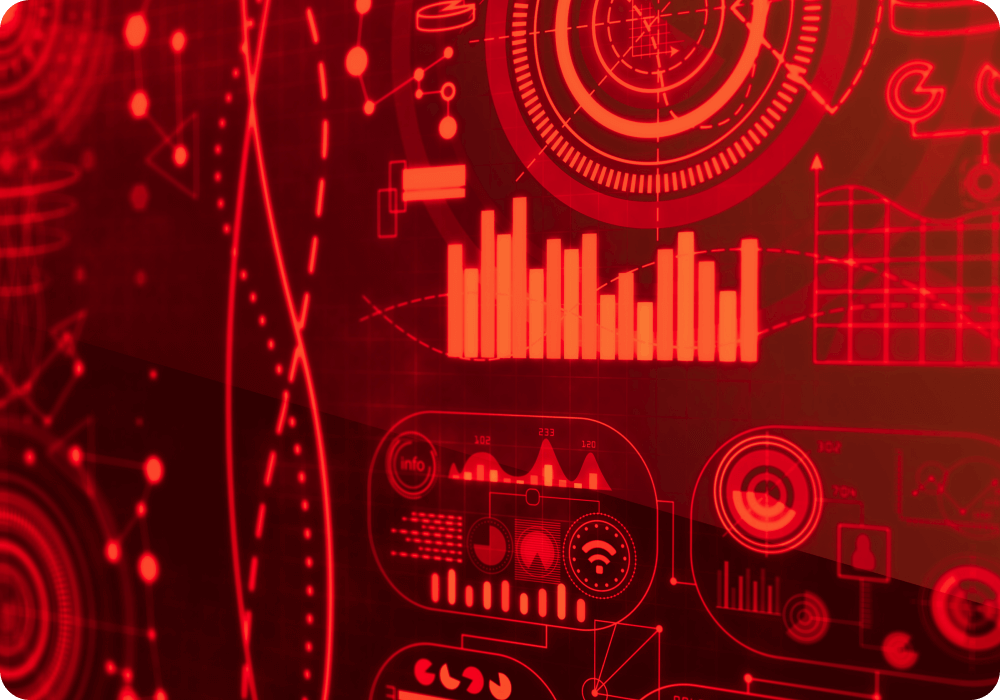Data is essential for businesses today. In a time in which decision-making is increasingly driven by information, data mining gives organizations the tools to develop valuable insights. Thus, it sets the foundations for business intelligence.
Data mining involves using highly-refined analysis tools to scan through huge sets of data, which allows for identifying previously unknown patterns. If processed intelligently, this information leads to highly-effective strategic business decisions.
Why “data mining”?
But why is the process described above called “data mining”? If we take a moment to grasp this metaphor, it may reveal to us a deep and potent meaning.
For ages, mining has been at the core of most civilizations. Raw geological materials extracted from the earth or the sea informed technological devices from primitive tools and weapons to modern microchips. Throughout millennia, these tools have been the foundations of long-lasting empires.
Technological eras include the stone age, the bronze age, and the iron age. More recently, the oil age. Today’s most valuable commodity is intangible: we live in the era of information.
In the past, the ability to add value to raw materials could make the difference between successful empires and failed civilizations. Today, growth is driven by the ability to transform data into actionable insights. Matt Wood, VP of product at AWS, shared his insights on how generative AI can create a flywheel effect for business growth in a recent interview with VentureBeat.
When the raw material (data) is transformed into powerful tools (business intelligence), organizations improve their competitive edge

The 3 types of data mining
Data Mining can be divided into three main types: descriptive, predictive, and prescriptive. Respectively, each of them aims at answering a different question: What happened? What might happen in the future? What shall we do next?
Let’s take a closer look.
1. Descriptive data mining
This type of data mining aims to translate data into meaningful descriptions. To achieve this, it begins by identifying patterns and then moves on to expressing them in useful terms.
Studies of customers’ buying habits, including social trends and frequency patterns, are common examples of descriptive data mining.
2. Predictive data mining
Basically, this type of data mining tries to anticipate future events based on identified patterns. Historical data and statistical algorithms are used to build predictive models that can forecast future outcomes.
Following our previous example, predictive data mining does not settle with describing behavioral patterns. Rather, it analyzes customer data to anticipate which products are more likely to be bought in the future.
3. Prescriptive data mining
This type of data mining aims to drive decisions. It takes a set of circumstances and indicates which is the optimal course of action based on it.
To stick to our retail example, marketers use prescriptive analytics to spend their budget as efficiently as possible. It allows them to identify which prospects are more likely to convert, automate email marketing, and retain high-value customers.

What is data intelligence: from mining to strategy
So now we can move on to see how data mining leads to business intelligence. But first, let’s begin by providing a quick definition of what we understand by business intelligence.
Business intelligence involves using data to gain insights into business performance. This leads to improved strategic thinking and decision-making.
When data mining -whether it is descriptive, predictive, or prescriptive- is applied to business intelligence, the integration of insights from multiple sources leads to strategic recommendations. This transformation of raw material into actionable insights is what we call data intelligence.
Today’s business landscape is ever-shifting and highly competitive. In this context, companies using data intelligence to drive their decision-making process are more likely to succeed.
Examples of data mining and business intelligence in different industries
Of course, the use of data mining for business intelligence encompasses most industries. In fact, thriving in any industry today relies on the intelligent use of data. This represents a huge challenge for CFOs, CMOS, and other decision-makers within organizations.
Let’s take a look at just a few examples of how data mining is used in different industries.
Retail and e-commerce
The use of data mining by retail companies and e-commerce platforms is pretty easy to grasp. Actually, it is all around us.
By now, everyone has noticed how Amazon and other e-commerce platforms seem to know what you are buying next. That is data mining and business intelligence in action together.
Spotting and anticipating trends allows retail and e-commerce businesses to keep the right items in stock, identify potential customers, retain existing ones, and increase sales.
Finance & Insurance
Measuring risks and predicting trends are the basis of the finance industry. Nothing can achieve these goals better than data mining combined with exceptional analytics.
Finance experts cannot predict the future (nobody can, for that matter). But data mining makes it easier to determine investment risks and estimate ROIs.
Also, data mining can be used to detect fraudulent activities by identifying patterns for suspicious transactions or behaviors indicating fraud.
Finally, financial institutions use data intelligence to determine whether or not certain individuals and organizations are eligible for loans.
Marketing and Social Media
Data insights are key for any marketing strategy that wants to achieve its goals today.
Data allows marketing specialists to analyze ads performance and ROIs, determine message effectiveness according to demographics, and optimize spending to drive conversions.
Telecommunications
Segmentation is one of the benefits of leveraging data mining. In the telecommunications industry, data gives companies insights to classify their customers and streamline processes.
Businesses use orientation to tailor their products and services to specific customer groups, which should lead to increased customer satisfaction.
We can recognize this particular use of data mining because it influences our everyday life. It determines the way we use our phones, access apps, and navigate through them. Companies analyze our interactions to understand our preferences and adapt UX.
Data & Business strategy in times of fluidity
The times we live in are defined by a fluid, sometimes even extremely volatile, business landscape. Gone are the days when a company’s annual sales could not vary much from one year to another. Today, the brightest trend may burn out within weeks, even days. Business growth is inextricably linked to how the use of data leads to more intelligent, strategic, and efficient decisions.
Data technologies offer us near-real-time information about how our business is doing at any given moment. By leveraging the different types of data mining, companies can improve business intelligence and acquire the tools to thrive in extremely competitive markets.
Keep reading our blog and our big data analytics services to learn more about how the latest technological trends may impact your business.











